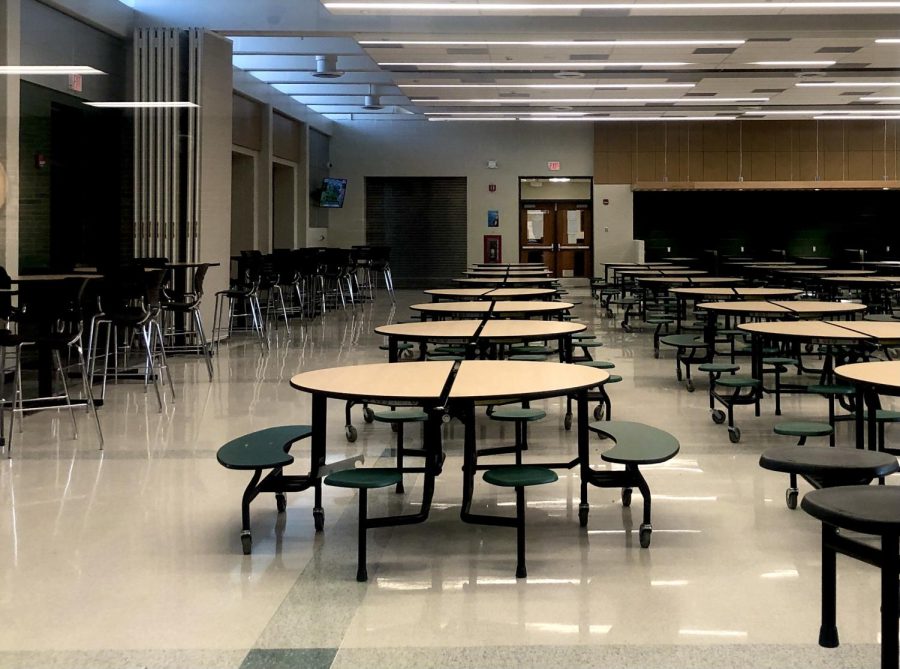The people behind the counter
What it’s like for the cafeteria staff at West High and the students’ opinions about the food.
A crowd gathers together in front of the large garage door that shields the Trojan Cafe from hungry students. The teens talk to each other and stare at their phones impatiently waiting for the doors to open. Once the doors are finally opened, hoards of students begin to flood the cafe and form disorderly lines.
We’ve all been there at some point in our lives, we’ve all stood in those crowded lines, and groaned in despair when the kitchen had run out of pizza. But what is it like for the staff? How has their experience with COVID-19 differed from students? How have their West High experiences been different from ours?
When the pandemic struck, students and teachers were forced to go online. This isn’t anything new to us. Going to class in bed and zoom are still a fresh memory, but that wasn’t the case for all of West High. Cafeteria workers had to continue coming to work and making sack lunches for West and elementary schools.
For those who don’t know, the West kitchen provides food for Alexander, Borlaug, Hills, Horn, and Weber elementary schools (Northwest Jr. High has their own kitchen staff). Now with in person school being the more popular option, the cafeteria staff have to bag single foods like fruits, vegetables and cookies. They’ve also gotten rid of the condiment pumps and replaced them with packets to lower the risk of spreading COVID-19.
Peter Adams ’22 feels the effect of the pandemic in the food he eats from the cafeteria too.
“Some of the really good things that they used to have, they don’t have anymore because you know, they’re being cautious, which I understand, but it still kind of sucks,” said Adams.
Along with having to change the way students get food, the cafeteria is fairly understaffed, making the wait lines in the cafe longer. However, that isn’t the only reason the lines are so long; students don’t always have their ID on them. While one or two students forgetting their ID wouldn’t cause the lines to get so long or extend the length of the wait time, a large part of students either don’t have or forget to bring their ID.
“We have to type everybody’s name and so it takes a little bit longer. If everybody has a card we can get you guys through faster,” said Liz Kanagy, the Kitchen Manager at West High.
It also makes the cafeteria staffs’ jobs harder.
“I know a lot of students don’t have [their ID] and that is something that is kind of frustrating,” said Kanagy.
Kanagy has been in the school district in nutrition services for 10 years. She started out as a Second Cook at Northwest Jr. High and worked up to being the Kitchen Manager at North Central, where she stayed for 5 years until she came to West this fall and became the Kitchen Manager here.
In case of delays, every morning Kanagy and her Head and Second Cooks start cooking around 7:30 and at 9:15 they begin to send the food they’ve made to the elementary schools.
Once Lunch C ends they begin to clean and take a break around 1:15. Then, once the carts with the dirty dishes from the elementary schools arrive, they wash those and head home around 2:30-3:00.
There’s no question that the cafeteria staff put a lot of effort into our food, but do students appreciate it? It turns out they do. Almost a third of students say the kitchen staff are very important.
What about the food itself? When a group of 53 students were asked about what they thought about the Cafeteria food 84% rated it a three out of five or higher.
While some may find this surprising, whether it be because they expected a higher or lower rating, it is clear that many believe that the stereotype of ‘bad cafeteria food’ does not apply to the West Cafeteria.
“I think that generally, it makes my day better to eat food from the lunchroom,” said Amira Qidwai ’22.
Some students may find the cafeteria food to live up to it’s stereotype, but as a whole, most, if not all can appreciate the work that has been put into making us food over the years.
Your donation will support the student journalists of West High School. Your contribution will allow us to purchase Scholarship Yearbooks, newsroom equipment and cover our annual website hosting costs.

This is Airi's first year on staff, they are a senior. They are super excited to be this year's Assistant News Editor.

(she/her) Yaya is a senior and this is her second year on staff. She is the sports editor and enjoys running cross country and track, making bracelets...



